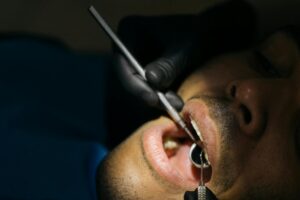In recent years, substance use among young people in Homabay County has become an increasingly visible and concerning issue majorly within the education sector. Teachers across the county have reported alarming trends: rising cases of absenteeism, declining academic performance, and noticeable behavioral changes in students. These issues are often linked to the use of substances such as alcohol, bhang (cannabis), miraa (khat), and tobacco, especially among adolescents in secondary schools.
A 2022 national survey by the National Authority for the Campaign Against Alcohol and Drug Abuse (NACADA) found that approximately one in five Kenyan students had experimented with drugs before the age of 18. Notably, counties in Western Kenya, including Homabay, recorded some of the highest rates of early drug experimentation outside major urban centers like Nairobi and Mombasa.
Educators from areas such as Rangwe, Suba, and parts of Ndhiwa Sub-County have noted that many learners begin experimenting during school holidays or when peer pressure intensifies. For instance, a headteacher at a secondary school in Ndhiwa shared that at least three Form Two students dropped out in 2023 due to behavioral issues and poor academic performance tied to substance use. While this case may seem isolated, it reflects a broader pattern affecting learning outcomes across the region.
The Neurological Impact of Substance Use on Adolescents
The teenage brain is still undergoing significant development, particularly in regions responsible for memory, emotional regulation, impulse control, and decision making. The introduction of psychoactive substances at this stage can disrupt normal neurological growth and impair cognitive function.
For example, bhang (marijuana) affects the hippocampus, a critical area involved in memory formation and learning. Regular use can lead to difficulties in retaining classroom information, which directly impacts academic performance. Similarly, alcohol consumption slows down brain activity, causing impaired concentration, delayed reaction times, and even episodes of blackouts after binge drinking.
In certain parts of Homabay, miraa (khat) is also widely used among youth. This stimulant increases alertness temporarily but can cause long-term effects such as insomnia, irritability, mood swings, and reduced attention span, all of which hinder classroom engagement and productivity.
According to the NACADA report, students who regularly use these substances are significantly more likely to underperform academically. In a primary school near Mbita, teachers observed that students sniffing glue often exhibited aggressive behavior, erratic moods, and difficulty following instructions, further complicating their integration into the learning environment.
Psychological Consequences of Substance Use
Beyond physical and cognitive effects, substance use among students in Homabay has been associated with serious psychological challenges. Drugs like alcohol, cannabis, and khat can exacerbate or trigger anxiety, depression, and even psychosis, especially in adolescents with pre-existing vulnerabilities.
Teachers in Rachuonyo South have reported students returning from school breaks showing signs of emotional distress such as sudden mood swings, withdrawal from class activities, and uncharacteristic aggression. These behaviors are often early indicators of mental health deterioration linked to drug use.
Research published in the East African Medical Journal (2021) supports these observations, noting that adolescent substance users are at higher risk of developing chronic anxiety disorders and depressive symptoms. Alarmingly, NACADA’s 2022 data showed that over 30% of student users reported feelings of hopelessness or sadness, creating a dangerous cycle where students may turn to drugs as a coping mechanism, only to find their mental health worsening.
Impact on Educational Outcomes
Substance use is not just a health concern; it is a serious threat to educational achievement in Homabay County. Students who use drugs often struggle with low motivation, poor concentration, and irregular attendance, all of which contribute to declining academic performance.
In schools around Ndhiwa and Kasipul, teachers have reported cases of students sleeping in class or failing to complete assignments, a trend often linked to late-night substance use. Some students miss school frequently, especially after weekends or holidays, falling behind in coursework and eventually dropping out altogether.
A 2022 Ministry of Education report identified substance abuse as one of the top five reasons for school dropout in Western Kenya, including Homabay County. Moreover, drug use has led to increased disciplinary problems, including classroom disruptions, defiance, and even violence.
One deputy principal from a school in Suba South described how managing a class becomes nearly impossible when two or three students are under the influence. “It affects the entire learning environment,” she said. “Not just for those using, but for everyone else.”
A Real-Life Story: The Case of John
John (not his real name) was once a promising Form Three student from a school in Rangwe. He was known for his ambition to become a teacher and consistently performed well academically. However, shortly after the December holidays, his behavior began to change he started missing classes, became irritable, and lost interest in schoolwork.
Concerned teachers discovered he had begun using bhang, introduced by older peers in his neighborhood. Despite multiple counseling sessions and interventions, his attendance continued to decline. By mid-term, he had completely dropped out of school.
His story mirrors a growing trend in Homabay, underscoring the urgent need for early intervention programs, mentorship initiatives, and community-based drug education efforts.
The Role of the Community and Education Sector
Addressing the challenge of substance use among youth in Homabay requires a multi-sectoral approach involving families, schools, community organizations, and local government agencies.
Teachers are often the first to notice warning signs such as sudden behavioral changes, frequent absences, or deteriorating academic performance. Schools in Mbita and Kendu Bay have successfully referred affected students to counselors or local health facilities, helping prevent further harm.
Parents play a crucial role in prevention. Open communication about the dangers of drug use, setting clear expectations, and modeling healthy behaviors can make a significant difference. According to NACADA’s 2022 study, students with supportive family environments are less likely to engage in risky behaviors.
Some schools in Homabay have taken proactive steps by integrating drug education into life skills lessons and forming peer support clubs. These initiatives allow students to discuss pressures they face and learn healthier coping strategies.
NGOs and community-based organizations have also stepped in. In Suba and Rachuonyo, several groups have launched awareness campaigns, trained teachers in basic counseling techniques, and facilitated workshops on mental health and addiction. These grassroots efforts are vital in filling gaps where formal services are limited.
Conclusion: A Call for Collective Action
To safeguard the future of Homabay’s youth, there must be a unified effort between schools, families, health workers, and civil society organizations. Early identification, timely intervention, and ongoing support are key to breaking the cycle of substance use and its devastating consequences.
We urge schools to establish youth mentorship programs, after-school activities, and mental health support systems tailored to the needs of students. In places like Ndhiwa, such initiatives have already shown promising results in reducing substance-related incidents.
Moreover, expanding access to youth-friendly mental health services and organizing school-based awareness days can foster open dialogue and reduce stigma around drug use and mental health.
Together, we can create a safer, healthier, and more supportive learning environment for every student in Homabay County.
References
- National Authority for the Campaign Against Alcohol and Drug Abuse (NACADA). (2022). National Survey on Drug and Substance Use Among Learners in Kenya.
- Ministry of Education, Kenya. (2022). Report on School Dropout Trends in Western Kenya.
- East African Medical Journal. (2021). “Substance Use and Mental Health Among Adolescents in Rural Kenya.”
- World Health Organization (WHO). (2020). Adolescent Brain Development and Substance Use.
- UNICEF Kenya. (2021). Youth Risk Behaviors and Protective Factors in Western Kenya.
- Kenya Institute of Special Education. (2023). Curriculum Integration of Life Skills and Drug Education.




